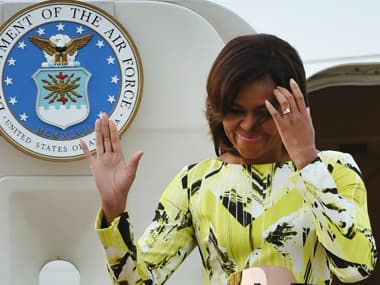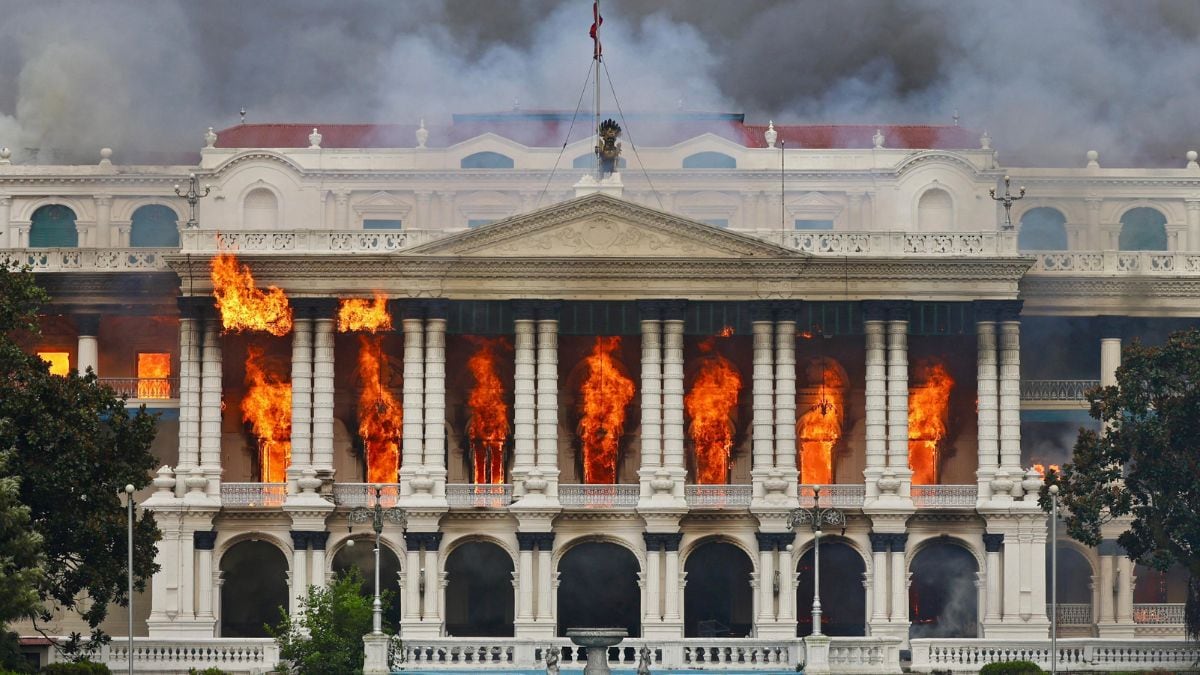Tokyo: Michelle Obama arrived in Japan on Wednesday afternoon on her first visit to the country, as part of a trip to highlight the importance of girls’ education. The first lady, who stepped off a US government plane wearing a bright yellow dress, was without her husband President Barack Obama for the tour, which will last five days and also includes a visit to Cambodia. [caption id=“attachment_2161721” align=“alignleft” width=“380” class=" “]  US first lady Michelle Obama arrived in Tokyo on Wednesday afternoon. AFP[/caption] Obama will meet Japanese Prime Minister Shinzo Abe and his wife Akie in separate meetings on Thursday, as well as attend events designed to highlight the Let Girls Learn initiative aimed at helping girls in developing countries go to school. On Friday she will visit tourist hotspot Kyoto, where she will go to the 1,200-year-old Kiyomizu Buddhist temple, a stunning wooden structure set in the hills around Japan’s ancient capital, as well as a similarly-aged Shinto shrine. She will fly to Cambodia on Friday afternoon from Osaka. Michelle, who in her online travel journal described her trip as a “part of a journey that began decades ago, back when I was a little girl,” is visiting Japan and Cambodia, who are among Asia’s richest and poorest nations. As a major aid donor, Japan plans to cooperate with the community-based “Let Girls Learn” initiative recently announced by President Barack Obama and his wife. On Thursday it announced plans to devote 42 billion yen ($340 million) over three years to supporting girls’ empowerment and gender sensitive education. Japan and the US also agreed to focus more development assistance on supporting girls’ education. The Japan Overseas Cooperation Volunteers will also cooperate with the Peace Corps, which is implementing the Let Girls Learn program. The program, led by the Peace Corps and other aid organizations, is meant to help get the at least 62 million girls who are unable to attend school back into classes. It is being rolled out in 11 countries, initially, including Albania, Benin, Burkina Faso, Cambodia, Georgia, Ghana, Moldova, Mongolia, Mozambique, Togo and Uganda. Hundreds of new, grassroots projects meant to facilitate girls’ education are planned. The first lady, trained as a lawyer, and her Japanese counterpart Akie Abe, daughter of a confectionary magnate, have made furthering the cause of children and women among their priorities. Abe is soft spoken but has openly disagreed with her husband, Prime Minister Shinzo Abe, on some issues, while actively backing his efforts to promote greater gender equality in government and business. Obama and Abe met with Japanese university students. The US first lady will also pay a call on Emperor Akihito and Empress Michiko and meet with the prime minister. On Friday she will visit the ancient capital, Kyoto, before traveling to Cambodia. The “Let Girls Learn” program is global, but White House officials say it also reflects a US commitment to be more involved in the Asia-Pacific region. Michelle will be the first sitting US first lady to visit Cambodia, whose government led by Prime Minister Hun Sen has been faulted for human rights violations. Child prostitution and human trafficking problems are further threats to young women’s well-being. She plans to promote open and inclusive politics and highlight basic values and principles that are important to the U.S. during her visit, said Evan Medeiros, senior director for Asian Affairs at the National Security Council. Obama’s stop in Japan is seen here as a “makeup” call after she did not accompany her husband during his state visit to Tokyo last year. Abe is soon due to make a reciprocal visit to the US. YouTube celebrity Michelle Phan is joining Obama in Tokyo to help spread awareness for the Let Girls Learn campaign and field questions to the first lady submitted through Twitter, Facebook and Instagram. With inputs from Associated Press and AFP
Michelle Obama arrived in Japan on Wednesday afternoon on her first visit to the country, as part of a trip to highlight the importance of girls’ education.
Advertisement
End of Article
Written by FP Archives
see more


)

)
)
)
)
)
)
)
)



